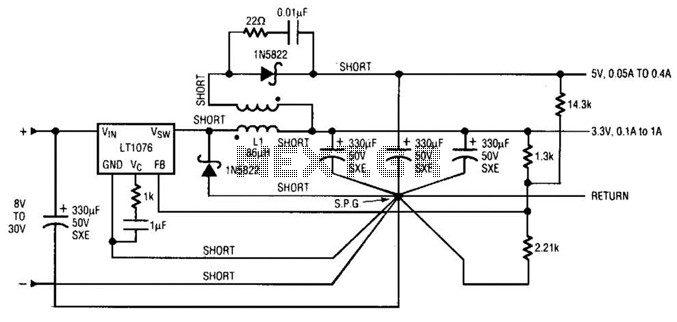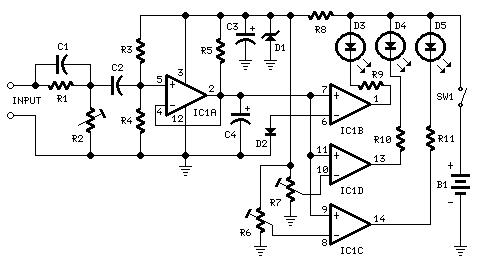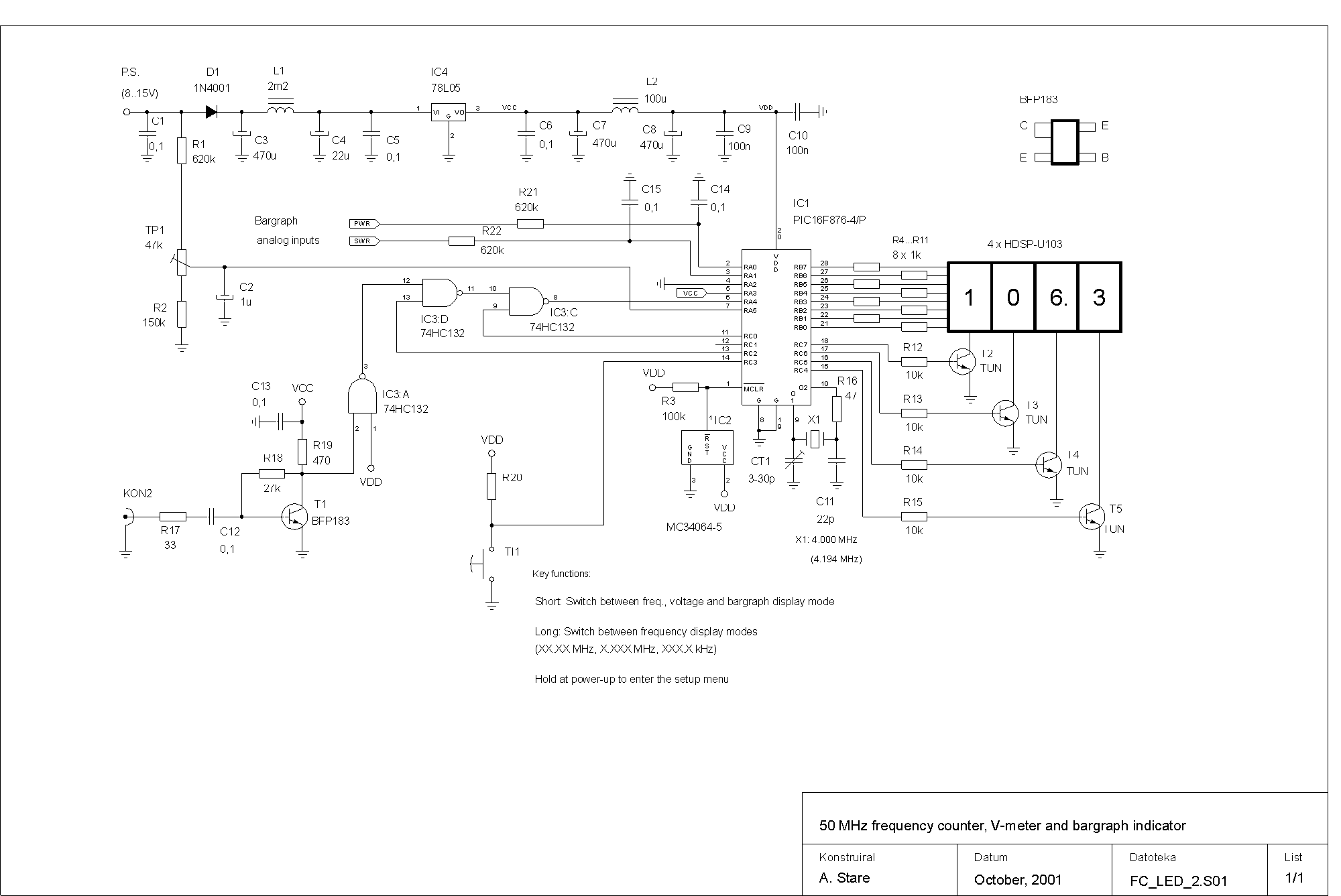
Transmitter RF Output LED Indicator

Transmitter RF Output LED Indicator Circuit Diagram. This RF output detector circuit, which includes a visual indicator, can be useful for an RF application.
The transmitter RF output LED indicator circuit is designed to provide a visual representation of the RF signal's presence and strength. This circuit typically consists of a few key components: a radio frequency (RF) detector, an LED indicator, and supporting passive components such as resistors and capacitors.
The RF detector is the core component, responsible for sensing the RF signal. It can be implemented using a diode or a specialized RF detection IC that converts the RF signal into a lower voltage DC signal. This conversion is essential for driving the LED indicator. The output of the RF detector is directly proportional to the strength of the incoming RF signal, allowing the circuit to provide a qualitative indication of RF activity.
The LED indicator serves as a visual output, illuminating when the RF signal is detected. The brightness of the LED can vary based on the strength of the RF signal, providing an intuitive gauge of the signal's intensity. To ensure proper operation, a current-limiting resistor is included in series with the LED to prevent excessive current flow, which could damage the LED.
Additional passive components, such as capacitors, may be employed to filter out noise and stabilize the circuit performance. The circuit can be powered through a low voltage supply, making it suitable for battery-operated devices or portable applications.
This RF output LED indicator circuit can be integrated into various RF devices, such as transmitters, receivers, and RF testing equipment, allowing users to monitor RF output visually. It is particularly beneficial in troubleshooting and optimizing RF systems, providing immediate feedback on signal presence and strength.Transmitter RF Output LED Indicator Circuit Diagram This RF output detector circuit using a visual indicator can be useful for an RF.. 🔗 External reference
The transmitter RF output LED indicator circuit is designed to provide a visual representation of the RF signal's presence and strength. This circuit typically consists of a few key components: a radio frequency (RF) detector, an LED indicator, and supporting passive components such as resistors and capacitors.
The RF detector is the core component, responsible for sensing the RF signal. It can be implemented using a diode or a specialized RF detection IC that converts the RF signal into a lower voltage DC signal. This conversion is essential for driving the LED indicator. The output of the RF detector is directly proportional to the strength of the incoming RF signal, allowing the circuit to provide a qualitative indication of RF activity.
The LED indicator serves as a visual output, illuminating when the RF signal is detected. The brightness of the LED can vary based on the strength of the RF signal, providing an intuitive gauge of the signal's intensity. To ensure proper operation, a current-limiting resistor is included in series with the LED to prevent excessive current flow, which could damage the LED.
Additional passive components, such as capacitors, may be employed to filter out noise and stabilize the circuit performance. The circuit can be powered through a low voltage supply, making it suitable for battery-operated devices or portable applications.
This RF output LED indicator circuit can be integrated into various RF devices, such as transmitters, receivers, and RF testing equipment, allowing users to monitor RF output visually. It is particularly beneficial in troubleshooting and optimizing RF systems, providing immediate feedback on signal presence and strength.Transmitter RF Output LED Indicator Circuit Diagram This RF output detector circuit using a visual indicator can be useful for an RF.. 🔗 External reference




